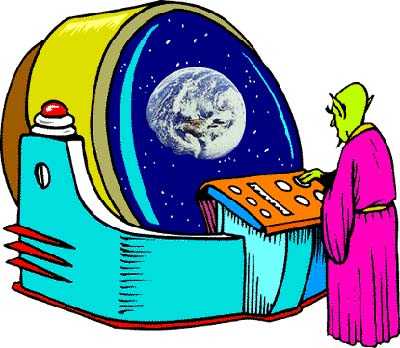Seeing the Universe
How Much Further?
Since their invention, telescopes have become larger and more
powerful. In a few decades, we will be able to resolve earth-like
planets around neighbouring stars as points of light. What are the
limits? Will we ever be able to resolve extra solar planets as disks
and make out weather patterns and landforms? Are advanced civilizations
already observing the Earth in detail from the stars?
![]() Home Pages of the World's Largest Telescopes
Home Pages of the World's Largest Telescopes

Observer at screen (Nodtronics 20,000 Vector Clip Art CD-ROM)
Earth from space (NASA)